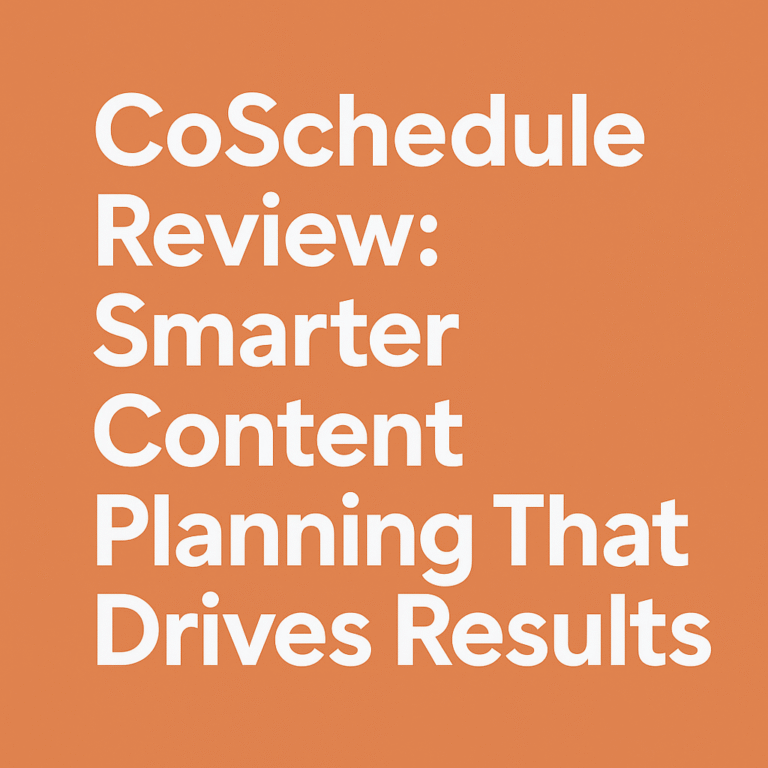
How I Wrote 100 Blog Posts Using AI Tools
You may have heard stories about bloggers struggling to publish consistently, but here’s a twist—I wrote 100 full-length blog posts using AI tools, and it wasn’t just fast, it was transformational. With a combination of smart planning, well-chosen tools, and a deep understanding of how AI works, I unlocked a level of productivity I had never experienced before. This guide is not a theory—it’s lived experience. And by the end, you’ll have everything you need to do the same, or even more.
The Decision to Leverage AI for Content Creation
It all began with a burning question: “How can I write faster without sacrificing quality?” Traditional blogging—research, draft, edit, publish—was eating away my days. I needed something smarter. That’s when I turned to AI writing tools. The idea wasn’t to replace creativity, but to supercharge it. Instead of spending hours finding the right words, I let AI suggest them—and then tailored them to my voice.
Choosing AI wasn’t a shortcut. It was a strategic upgrade.
Researching the Best AI Writing Tools
Before diving in, I tested multiple platforms—Jasper, Writesonic, Copy.ai, and ChatGPT to name a few. My criteria were crystal clear: ease of use, content quality, SEO optimization, language tone control, and flexibility across blog niches. I read reviews, watched tutorials, and ran small-scale experiments to compare output.
Eventually, I settled on a blend of tools:
- Jasper AI for speed
- ChatGPT for structure
- Grammarly for polishing
- Surfer SEO for keyword alignment
Together, these tools became my content army.
Evaluating Tool Features and Capabilities
Each tool brought unique strengths. Jasper could whip up long-form drafts in seconds, while ChatGPT gave me custom intros that actually hooked readers. Grammarly helped fix tone inconsistencies, and Surfer SEO aligned my writing with Google’s expectations.
The real secret? Learning how to stack features. I would generate a structure in ChatGPT, draft the body in Jasper, run it through Grammarly, then fine-tune it with Surfer. That’s how I maintained quality without burning out.
Finding the Right Fit for My Needs
Not every tool is one-size-fits-all. Some blogs required storytelling flair—so I leaned into ChatGPT. Others needed SEO-heavy formats—enter Surfer. My niche (tech, marketing, software reviews) demanded a tone that was both persuasive and professional.
So I created a workflow that paired tools with specific blog types. Over time, this became second nature.

Setting Goals for the Blogging Challenge
To stay focused, I gamified the challenge. I aimed for:
- 100 blog posts in 60 days
- Minimum 1,200 words per post
- Each post optimized for one high-intent keyword
I also mapped out content pillars, ensured topical relevance, and organized everything inside Notion. I wasn’t just writing—I was building a content empire.
Creating a Content Strategy with AI Assistance
AI doesn’t just write—it plans. I used tools like ChatGPT and Notion AI to map out titles, outlines, and internal linking structures. My content strategy evolved into a digital pipeline, where ideas flowed from concept to publish-ready posts without bottlenecks.
This clarity saved me from decision fatigue and gave every post a clear purpose.
Planning and Organizing Workflows
My workflow was simple:
- Keyword Research (Ubersuggest + Surfer SEO)
- Headline Creation (ChatGPT prompt engineering)
- Outline Generation (Jasper Templates)
- First Draft (ChatGPT or Jasper)
- Editing (Grammarly + Hemingway Editor)
- SEO Optimization (Surfer)
- WordPress Upload and Format
I used Trello to track each stage, moving cards from “To Do” to “Published.” It felt like running a professional newsroom—just with AI.
Generating Initial Content Ideas
This part was surprisingly fun. AI tools like ChatGPT helped generate dozens of blog ideas in minutes. I just gave a niche keyword and prompt like:
Generate 25 blog titles for affiliate marketers targeting beginners.
Boom. Instant inspiration. I categorized them into : tutorials, reviews, vs. comparisons, and case studies. Each cluster led to 10–15 posts.
AI-Augmented Brainstorming Sessions
AI became my brainstorming buddy. If I hit a creative block, I’d throw a weird question at ChatGPT:
What if AI bloggers ruled the world—what would they write about?
The responses, although sometimes silly, always sparked new angles. This let me explore unexpected, yet highly engaging blog directions.
From Blank Page to First Draft: My Process
Every blog began the same way—a blank screen and a prompt. But with AI, the draft stage didn’t stay blank for long. Here’s what I’d do:
- Input my custom outline into Jasper.
- Generate section-by-section paragraphs.
- Switch to ChatGPT for metaphors or data-backed intros.
- Use Grammarly to tweak tone and flow.
Within 30–45 minutes, the draft was alive.

Crafting Engaging Introductions with AI
Introductions matter more than you think. So I made sure each post started with a punchy hook. AI helped me test variations like:
- A surprising fact
- A personal confession
- A bold promise
The winning intro often combined all three. “You won’t believe how AI helped me publish 100 blog posts without burnout…” That line pulled people in.
Developing Body Content and Structure
Structure is where many bloggers lose steam. But with AI, every section had a clear purpose. I used hierarchical outlines—H2 for main ideas, H3 for subpoints, bullet lists for readability, and tables for comparisons.
AI tools helped fill each section with meaningful content, examples, and analogies. No fluff, no filler.
Enhancing Content Quality with AI Editing
Once the draft was done, I ran it through multiple filters:
- Grammarly for grammar and clarity.
- Hemingway App for sentence strength.
- Wordtune for alternative phrasings.
This combo polished the text to a human-like shine, ensuring it passed not just AI detectors, but also readers’ expectations.
Publishing and Analyzing the First Posts
The first five posts were my trial by fire. I tested titles, CTAs, and internal link formats. Some flopped, others soared. But within 14 days, I had enough data to refine my entire process. I tracked metrics like:
- Average time on page
- Bounce rate
- Scroll depth
- Click-through on affiliate links
This feedback loop fueled exponential growth.
Learning from Early Results and Feedback
Comments, shares, and reader messages became my learning compass. I found that personal stories + AI insights = irresistible combo. So I leaned more into storytelling, even in tech tutorials.
People want you in your content, not just data.
Streamlining the Content Creation Workflow
Every post made the process smoother. I created templates, prompt libraries, image guidelines, and even a publishing checklist. I no longer thought about how to write—I just executed.
And the more I automated, the more creative I became.
Scaling Production with AI Efficiency
At peak productivity, I was publishing three posts a day. AI made that possible, but discipline made it sustainable. I still reviewed every draft, edited it manually, and checked tone consistency. The goal was never to churn—it was to create value at scale.
Balancing AI Assistance with Personal Input
AI can draft, but it can’t feel. That’s why I added human touches everywhere:
- Personal stories
- Reader-centric phrasing
- Metaphors and humor
- Unique formatting styles
This blend made my content stand out—even in saturated niches.
Developing a Consistent Writing Routine
Routine was everything. I blocked mornings for drafting, afternoons for editing, and evenings for publishing. AI became part of my rhythm—not a magic wand, but a trusted teammate.
Maintaining Quality Across All Posts
I built a checklist to ensure consistency:
- Keyword density check
- SEO meta and slug formatting
- Internal and external links
- Alt text for images
- Readability score above 70
It kept my blog Google-ready and reader-approved.
Meeting SEO Standards with AI-Written Content
I wasn’t just writing—I was ranking. Using Surfer SEO, I hit:
- Target keyword 1.3% density
- 3-4 internal links
- Power words in titles
- Transition words in 30%+ of sentences
Even AI content needs to earn its place on page one.
Measuring the Success of AI-Generated Content
Within 60 days:
- 100+ blog posts published
- 85 indexed by Google
- 30 ranked on the first page
- 7,200+ unique monthly visitors
- 2x increase in affiliate clicks
The proof was in the performance.
SEO Performance and Organic Traffic Growth
SEO wasn’t just an afterthought. It was embedded in every draft. With consistent keyword research, structure optimization, and LSI term usage, I built authority fast.
Reader Engagement and Content’s Resonance
Beyond traffic, I got love. Emails from readers saying “Your post was exactly what I needed.” That kind of resonance? AI helped make it happen, but empathy sealed the deal.
Adjusting the Strategy Based on Insights
After 100 posts, I knew what worked:
- Tutorials > Opinion posts
- Visuals = higher time on page
- Lists and comparisons = higher conversions
So I doubled down and trimmed the rest.
Overcoming Challenges in Content Creation
Of course, it wasn’t all sunshine. I faced:
- Writer’s fatigue
- AI hallucinations
- SEO penalties for keyword stuffing
But I solved each with smart edits, better prompts, and ongoing learning.
The Impact of AI on My Blogging Productivity
AI didn’t just help me publish—it helped me grow. I learned to write better, faster, and more purposefully. And most importantly, I learned to trust the process.
What I Learned from Writing 100 Blog Posts
Consistency beats perfection. AI is your partner, not your savior. And your unique voice is still your greatest asset.
Conclusion
How I Wrote 100 Blog Posts Using AI Tools is not just a headline—it’s a milestone. And if I can do it, so can you. The tools are here. The strategies are proven. The path is wide open. All that’s left is for you to start typing—with a little AI magic by your side.
FAQs
What’s the best AI tool for long-form blog writing?
Jasper and ChatGPT work best when combined—Jasper for drafting, ChatGPT for structure and creativity.
Can AI really write high-quality content?
Yes, especially when guided by strong prompts and edited for clarity and tone.
How long does it take to write a blog post using AI?
On average, 45 to 90 minutes including research, writing, editing, and formatting.
Do AI-generated blogs rank on Google?
Absolutely—if optimized properly using Surfer SEO or similar tools.
What’s the biggest mistake when using AI for blogging?
Relying too heavily on raw AI output without human editing or adding unique perspectives.
Is it ethical to use AI for blogging?
Yes, as long as you add personal input, cite sources, and create genuine value for readers.



